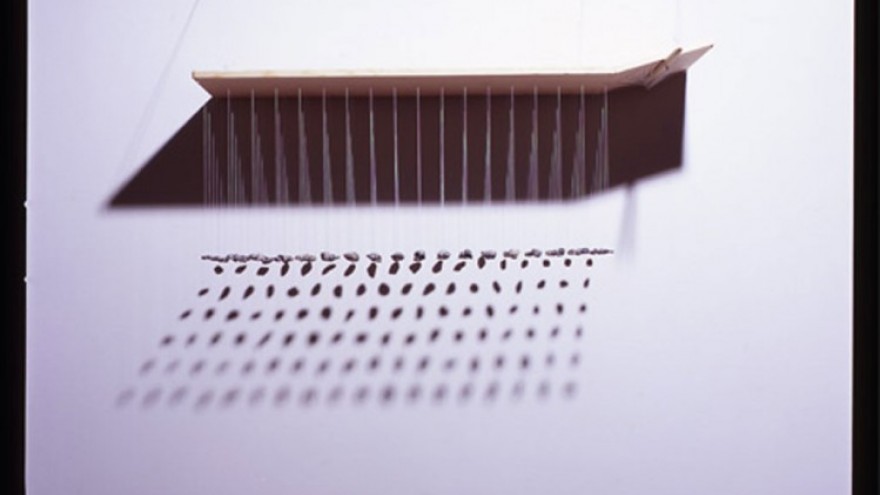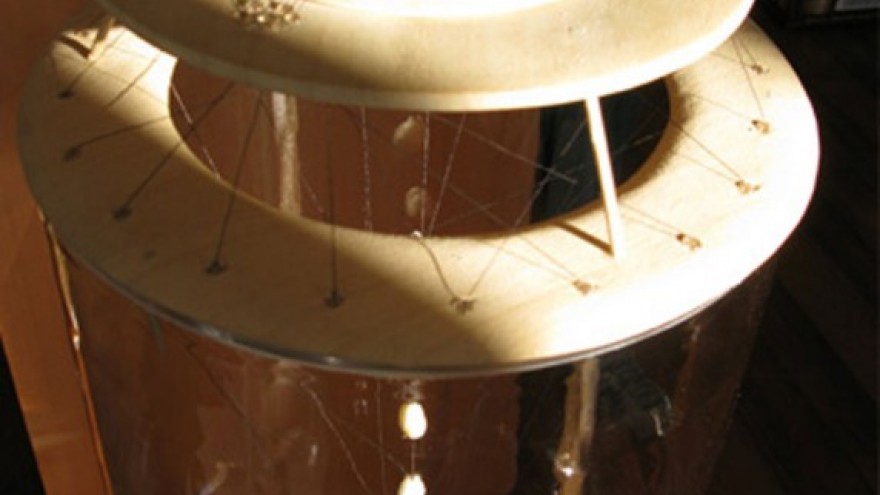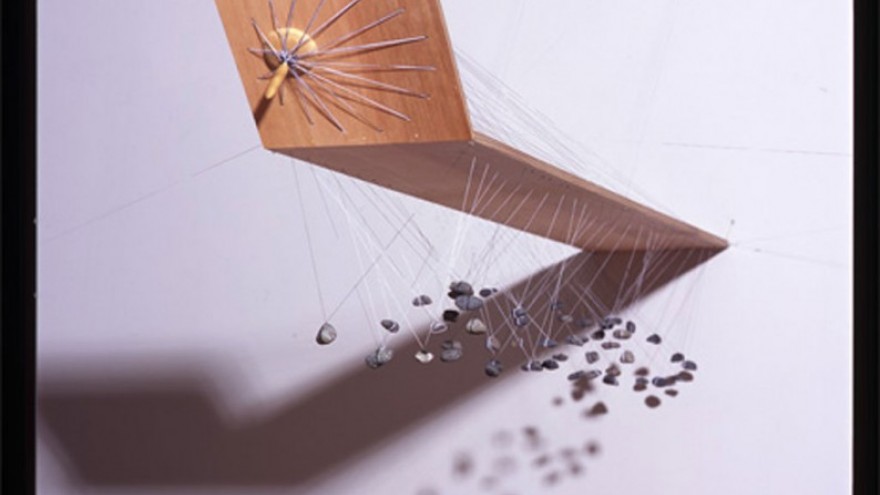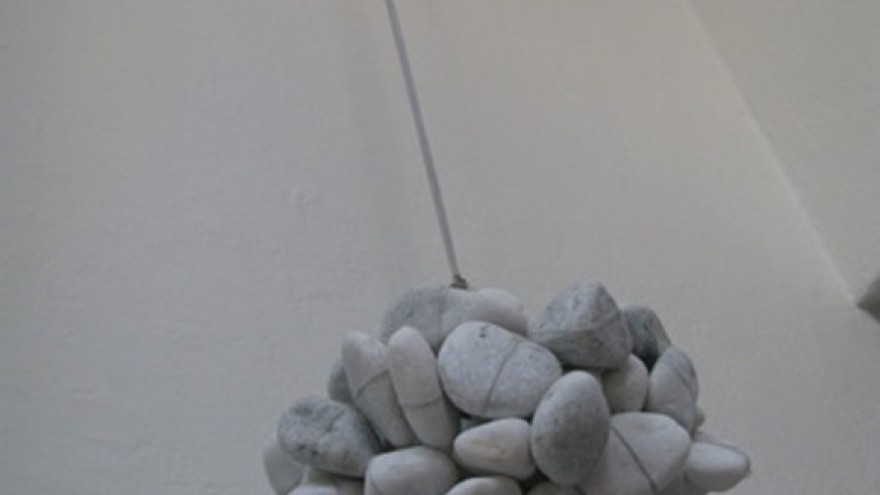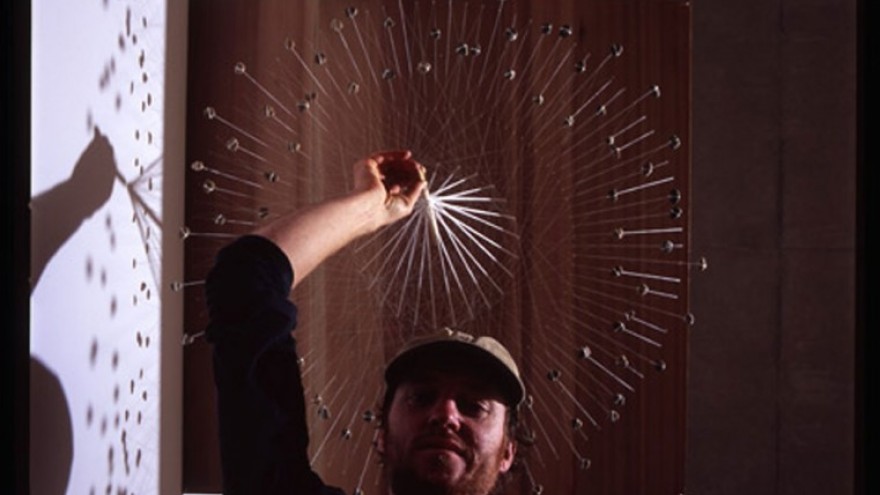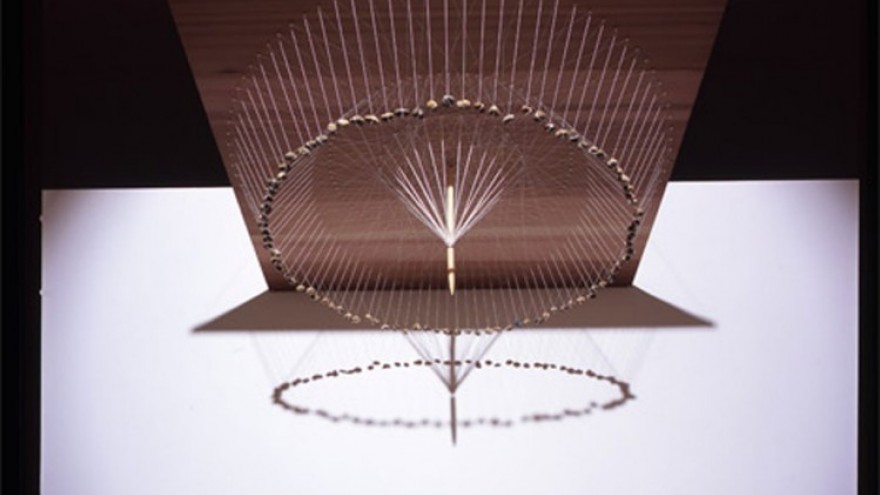What do you get when you combine “a string of unfinished degrees”, a keen interest in maths and physics, the creative need for self-actualisation and the manifestion of an authentic voice? The answer is Justin Fiske. A fine artist who has established himself as a kinetic sculptor, Fiske highlights the human need for analogue experiences.
Fiske’s portfolio presents unique kinetic sculptures that draw on his interests, and unfinished degrees, in maths, physics, art and three-dimensional perception. Using simple mechanics, Fiske creates machine sculptures that allow small rocks, suspended at regular intervals on a thread, to be operated by a handle that makes them move. The resulting motions mimic natural wave and helix patterns. Fiske describes his sculptures as experience generators that invite the viewer to interrogate the analogue experience.
His work has been well received, with commissions from Spier, a residency at Art Basel 2010 in Switzerland, and several group and individual exhibitions. Fiske spoke to Design Indaba about his creative process, the need for self-realisation and unpacking the abstract.
How did the “string of unfinished degrees” happen?
I can’t really explain all the crazy things I’ve done. The unfinished degrees I can only justify through saying that they have all been useful. It’s a really bad way to study but I don’t regret it. Some of the degrees just became redundant halfway through. But it sounds a little bit like spoilt-brat-doesn’t-need-to-finish-anything! Having said that, there’s nothing that I’ve done that hasn’t had an actual visual reference in the work that I’ve made.
How would you describe the work that you do as a fine artist, and why is it that you do it?
I’m not really sure what a fine artist is, but it’s not that different to what poets do, or anybody else working in the creative arts. What I do is pure self-indulgence. It’s a personal process through which I try to find an authentic voice. It’s for my own benefit so I get what I need from it. It’s difficult because you don’t necessarily make a living.
So your work is the result of a desperate need to assert your creativity?
The creative process is difficult to justify. Obviously I can get involved in my creative process and do lots of wacky stuff that belongs to me, and allows me to cope with the introspection of this existential exercise. But part of this knowledge is to realise that a utopian existence is not defined by making crazy things out of pebble sculptures. This lifestyle is not the best way to anchor your sanity. But if you do it properly then it will be immensely fulfilling, and you might end up being original.
Is there ever conflict between what your authentic creative voice wants you to make, and the stuff that the market likes?
I think lots of people make conscious compromises about what they choose to do. I’ve sometimes had to do money jobs where I don’t really get to choose what I want to do, simply because you have to pay the bills. I’m very grateful that I happen to make stuff that resonates with people.
What if your authentic voice required of you to make things that did not resonate with people so easily?
Primarily you need your work to belong to you and you need to make the stuff you would make anyway. It’s all really a type of utopian idealism. The ultimate challenge becomes how to manage what you would have made without the financial imperatives of what people want you to make. Already my career is about managing what people want and what I want them to want. But I must like a design first, the design must work for me. If it doesn’t suit you then how do you know if it is worthwhile at all.
Some of your work is concerned with the limitations of modern technology and the anonymous user interface. Can you expand on this?
I find modern technology and the user interface very limiting, very quarterised and just not very satisfying. Most of our lives are mediated through the virtual, through some digital device and we have no way of interrogating this process. There is a huge absence of the analogue in the human experience and this is what I try and explore through my work. While all these technologies are totally intelligible, they are too abstract to really take apart.
How does your work address this issue?
This divide between the abstract and the analogue is easily fixed for me. I can spend weeks making little analogue machines, and get the satisfaction of rescuing the visualisation from the virtual, a process which allows for the exploration of the elegance of a simple mechanical experience. And this is all part of the aesthetic that I am interested in. Viewers have to interact with my work in a very analogue way. It’s interesting that people generally talk about “interactive” work in a way that is completely non-interactive, to me. Interaction is often about virtual representations, and how good we are at dealing with the fact that it’s a controlled and contrived environment.
Lastly, what drives you to create the type of work that you do?
I’m driven by curiosity. It’s such a fundamental human drive. I guess I’m also driven by self-preservation, which is manifested through curiosity. And fun. What I do is fun. Sometimes it’s super fun. There is a fine line between fun and torture though!

